Diptodip Deb
Programmable 3D snapshot microscopy with Fourier convolutional networks
Apr 21, 2021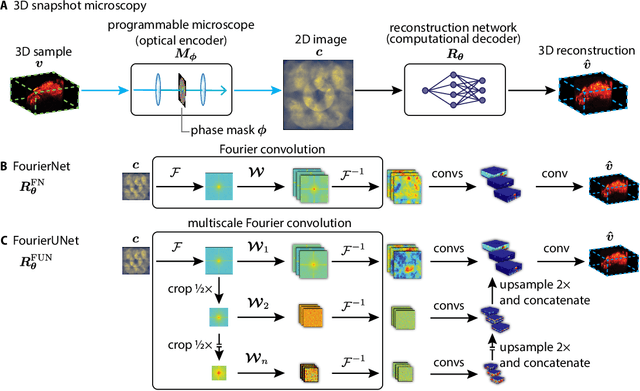

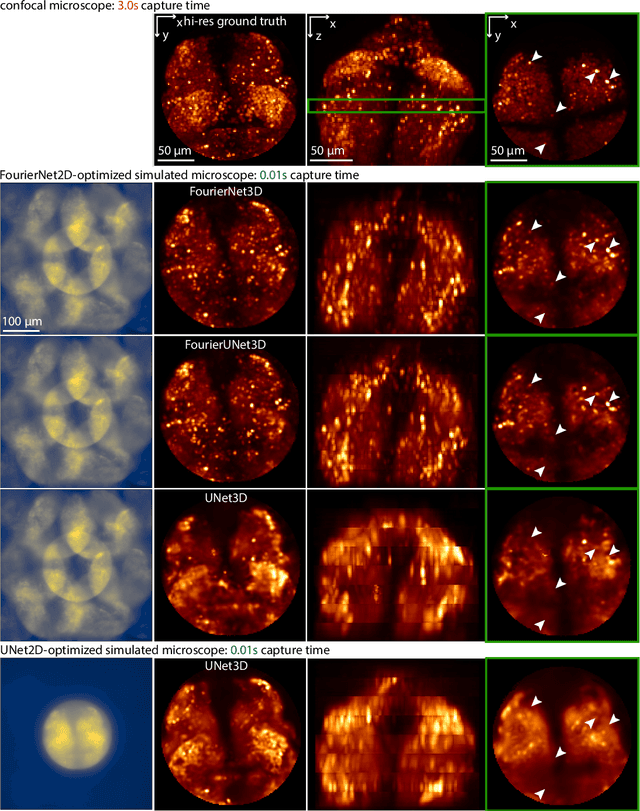

Abstract:3D snapshot microscopy enables volumetric imaging as fast as a camera allows by capturing a 3D volume in a single 2D camera image, and has found a variety of biological applications such as whole brain imaging of fast neural activity in larval zebrafish. The optimal microscope design for this optical 3D-to-2D encoding to preserve as much 3D information as possible is generally unknown and sample-dependent. Highly-programmable optical elements create new possibilities for sample-specific computational optimization of microscope parameters, e.g. tuning the collection of light for a given sample structure, especially using deep learning. This involves a differentiable simulation of light propagation through the programmable microscope and a neural network to reconstruct volumes from the microscope image. We introduce a class of global kernel Fourier convolutional neural networks which can efficiently integrate the globally mixed information encoded in a 3D snapshot image. We show in silico that our proposed global Fourier convolutional networks succeed in large field-of-view volume reconstruction and microscope parameter optimization where traditional networks fail.
An Aggregated Multicolumn Dilated Convolution Network for Perspective-Free Counting
Apr 20, 2018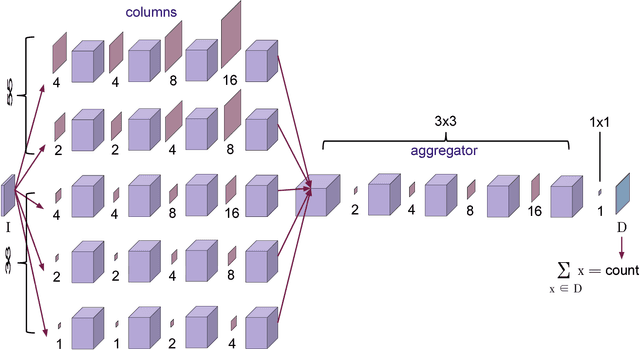
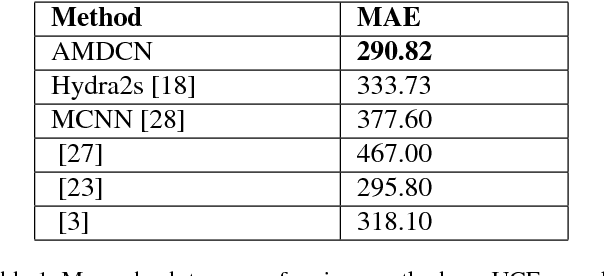

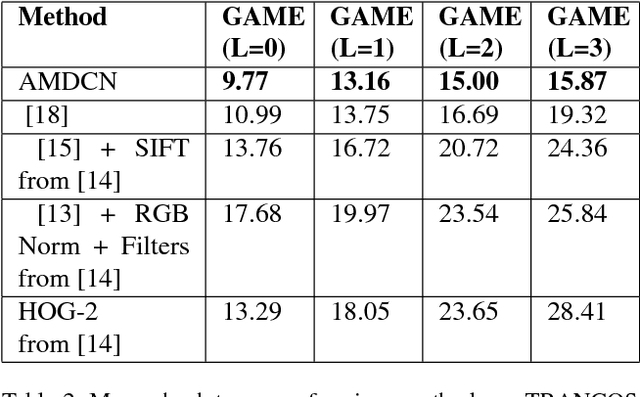
Abstract:We propose the use of dilated filters to construct an aggregation module in a multicolumn convolutional neural network for perspective-free counting. Counting is a common problem in computer vision (e.g. traffic on the street or pedestrians in a crowd). Modern approaches to the counting problem involve the production of a density map via regression whose integral is equal to the number of objects in the image. However, objects in the image can occur at different scales (e.g. due to perspective effects) which can make it difficult for a learning agent to learn the proper density map. While the use of multiple columns to extract multiscale information from images has been shown before, our approach aggregates the multiscale information gathered by the multicolumn convolutional neural network to improve performance. Our experiments show that our proposed network outperforms the state-of-the-art on many benchmark datasets, and also that using our aggregation module in combination with a higher number of columns is beneficial for multiscale counting.
 Add to Chrome
Add to Chrome Add to Firefox
Add to Firefox Add to Edge
Add to Edge